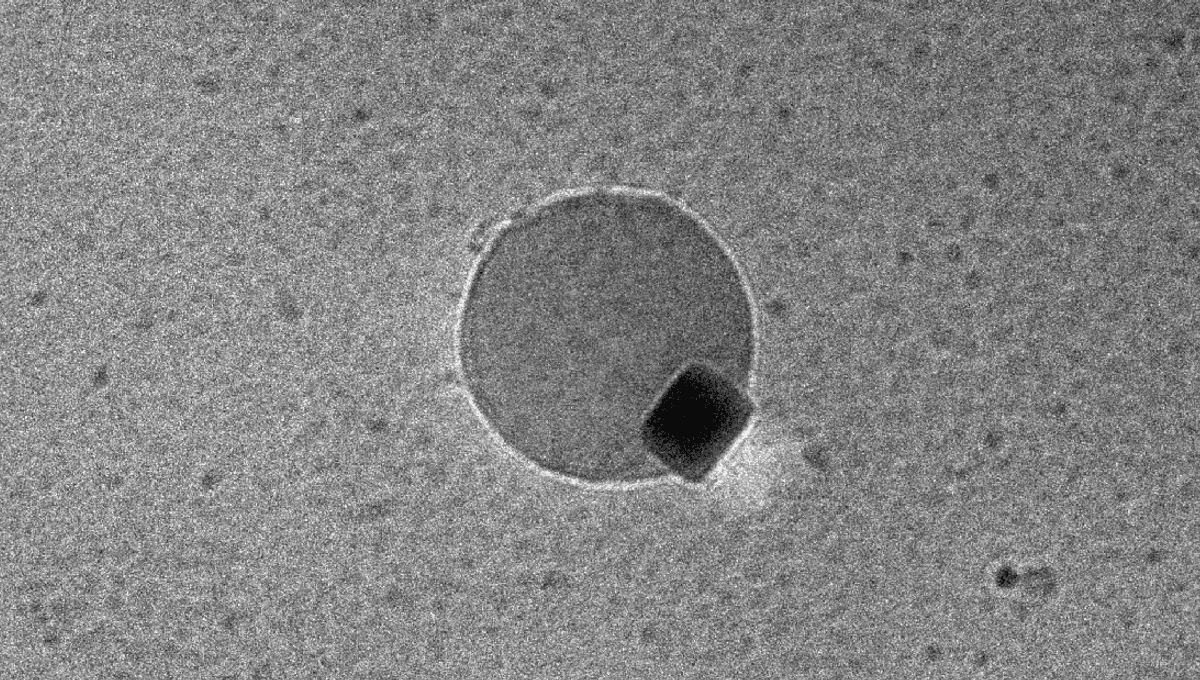
Researchers have witnessed and filmed oxygen and hydrogen merging to form tiny, nanoscale water bubbles for the first time.
Back in 2024, the team from Northwestern University, Illinois, developed a new method for viewing and analyzing gas molecules in real time. The method involves trapping gas molecules within honeycomb-shaped nanoreactors using ultra-thin glassy membranes, which can then be viewed with high-vacuum transmission electron microscopes.
Using the new technique, the team attempted to take a closer look at a hundred-year-old mystery; how the rare metal palladium can rapidly generate water from hydrogen and oxygen.
“It’s a known phenomenon, but it was never fully understood,” Yukun Liu, the study’s first author said in a statement. “Because you really need to be able to combine the direct visualization of water generation and the structure analysis at the atomic scale in order to figure out what’s happening with the reaction and how to optimize it.”
Using the new technique, they were able to watch in slight disbelief as hydrogen entered the palladium, and a nanosized bubble of water formed.
“We think it might be the smallest bubble ever formed that has been viewed directly,” Liu added. “It’s not what we were expecting. Luckily, we were recording it, so we could prove to other people that we weren’t crazy.”
As well as visual evidence, the team analyzed the bubble using electron energy loss spectroscopy, the same technique that India’s Chandrayaan-1 used to confirm the presence of water on the Moon, though on a nano scale.
“By directly visualizing nanoscale water generation, we were able to identify the optimal conditions for rapid water generation under ambient conditions,” Vinayak Dravid, senior author of the study, added. “These findings have significant implications for practical applications, such as enabling rapid water generation in deep space environments using gases and metal catalysts, without requiring extreme reaction conditions.”
The team found that the rate at which palladium produces oxygen is significantly affected by the sequence in which hydrogen and oxygen are introduced. As well as just being awesome to see this process on such tiny scales, the research could lead to better water production techniques. One area where it could really help out would be space travel. If palladium could be pre-filled with hydrogen, astronauts would only need to add oxygen in order to create drinkable water. Short of a quick stop on Europa, water may be an issue on far-off missions to visit other planets, or establishing bases there.
“Think of Matt Damon’s character, Mark Watney, in the movie ‘The Martian.’,” Dravid added. “He burned rocket fuel to extract hydrogen and then added oxygen from his oxygenator. Our process is analogous, except we bypass the need for fire and other extreme conditions. We simply mixed palladium and gases together.”
The study is published in the Proceedings of the National Academy of Sciences.
Source Link: Astonishing Video Shows Hydrogen And Oxygen Forming Water At The Nano Scale